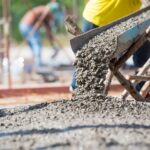More than 300 million children live in places with high levels of air pollution. Two billion children live in places with air pollution that surpasses the standards set forth by the World Health Organization.
Indoor and outdoor air pollution are responsible for taking the lives of 600,000 children each year. Outdoor and indoor air pollution are some of the biggest dangers to the health of children because they can be tied to a host of respiratory illnesses.
Maintaining humidity levels in your home to prevent mold and the development of health issues is crucial. Keep reading to learn how to lower humidity in your home.
An Air Conditioner Can Help
Turning on your air conditioner is one of the simplest ways to remove warm air from your home, especially in the summer. You want to make sure you’re always taking care of any AC repairs to keep the unit functioning properly.
Regularly clean or change your air conditioner’s filter. Clean the drain lines and drip pan often to make sure airflow remains unrestricted, and your AC keeps working to reduce the humidity in your home.
An Exhaust Fan Can Do the Trick
If you’re looking to reduce humidity in your home, you can also invest in some exhaust fans if your home doesn’t have them already. Exhaust fans are especially important in areas of your home that tend to stay warmer, like your bathroom and kitchen.
The vent fan in your kitchen should be kept on while you cook as cooking increases the heat in your kitchen, and you want to keep humidity levels low. These ventilation systems are key to keeping moisture out and preventing issues like mold from developing in your home.
Open Your Home’s Windows
The areas in your home that tend to collect the most moisture are the bathroom and kitchen, and if you don’t have an exhaust fan installed in those areas, you can always open some windows or doors to push the warm air out.
Install a screen so you can leave your door open while you cook. If your bathroom has a window, open that after a shower, so the bathroom won’t retain too much moisture. This will help you maintain the appropriate level of humidity in your home.
Shorten Your Showers
High indoor humidity is often felt in your bathroom right after you shower. If exhaust fans and open windows aren’t removing all the excess humidity, you can try shortening your showers.
This will help you become more environmentally friendly because you’ll be conserving water. You’ll be getting rid of your humidity problem, too.
Another option is to take colder showers. Hot showers produce a lot of steam, and this builds up moisture in your bathroom. A cold shower will lower the humidity in no time.
Use a Humidifier to Maintain Ideal Humidity Levels
While lowering the humidity in your home is the goal, you shouldn’t remove all humidity from the air. Air that is too dry can become uncomfortable for those with sensitive skin or allergies. The ideal humidity level should be around 50% so that you can feel as comfortable as possible.
Home humidity control is easy with a humidifier that will keep your home from becoming too dry or too moist. To keep humidity levels low, you can simply turn it down to reduce the amount of vapor being realized into the air or turn it off for a couple of hours.
Repair Leaks
Reducing humidity is as simple as repairing any leaks you have around your home. Leaking water will add moisture to your home that can increase humidity and lead to mold growth.
You can correct this by repairing the leaks to keep water from building up in one place. You can usually tell that your home leaks by spotting water damage in stained walls or if your water bill has been unusually high recently.
Move Plants Outside
While house plants beautify your home and make it greener, they can also increase humidity levels in your home. Plants release moisture; more plants equal higher levels of humidity.
It’s best to keep plants outside for some time during the day to reduce the humidity in your home. Watering your plants is important but make sure you aren’t overwatering them as this can add to the excess moisture you’re feeling in the home.
Clean Your Home’s Gutters Often
A great humidity reducer is making sure your home’s gutters are always clean. Gutters are outside, but they can be part of the problem when it comes to indoor moisture and humidity.
If you leave your gutters filled with debris, this can easily lead to water buildup that can seep into the walls inside your home. This moisture will increase humidity and can lead to the development of mold.
Hang Laundry Outside
Delicate clothes are best washed by hand and hung to dry. While doing so will keep your clothes looking new, it can increase humidity.
If you’re hanging clothes indoors, the dampness from the wet clothes can add to the humidity problem. Install a clothesline or drying rack outside and let your clothes dry in the sun. This will help your clothes dry faster, too.
Remove Carpeting
Carpets can be a great addition to your home, but they can also cause a humidity problem. Carpets can retain moisture, so consider getting rid of yours if you’re still experiencing high levels of humidity in your home.
Learn How to Lower Humidity in Your Home
Maintaining the ideal humidity level in your home is key to living comfortably and preventing issues like mold. This guide teaches you how to lower humidity in your home in easy ways.
Making sure your home is properly ventilated and repairing any leaks are some of the best ways to lower humidity. Make sure you check out some of our other blogs to learn more.




